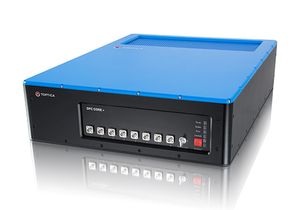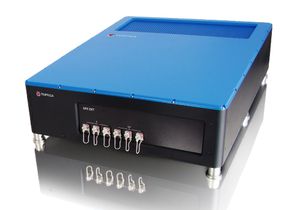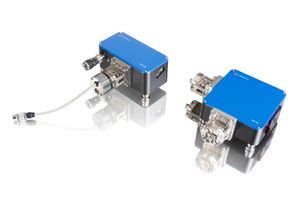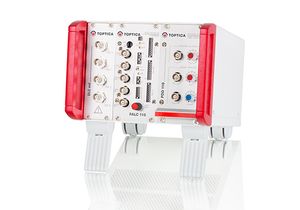Frequency Combs
Frequency combs are very precise tools which are used for applications that require highest accuracy and resolution when measuring the frequency of light. A frequency comb has an optical spectrum that consists of equidistant lines in the frequency domain. These lines serve as reference to measure unknown frequencies or to stabilize a laser to a certain frequency. The discrete spectrum in the frequency domain corresponds to a regular train of laser pulses in the time domain. Such output characteristics can be generated from a standard mode-locked laser oscillator. The discrete lines of the spectrum are separated by the repetition rate frep of the laser pulses.
In addition, the so called carrier-envelope offset frequency fCEO is given by the offset of the periodic spectrum from zero. A mode-locked laser is usually called a frequency comb when both degrees of freedom, fCEO and frep, are stabilized to a frequency reference. The discrete spectrum adopts the absolute stability of the reference and can therefore be used as an “optical ruler”. The performance of a frequency comb is thus given by the choice of reference and the ability to stabilize its phase and frequency fluctuations to this reference.
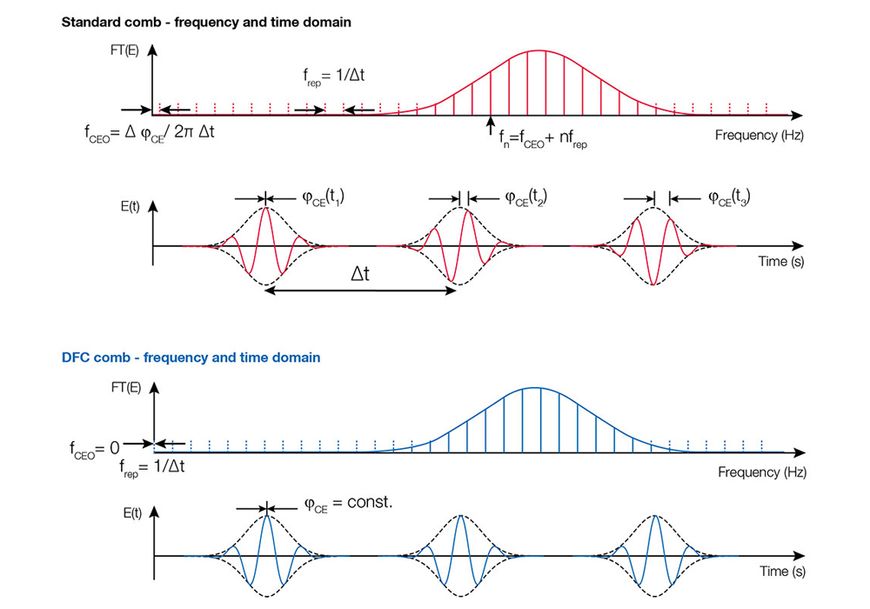
A non-zero carrier-envelope offset frequency fCEO is caused by a phase slip between the envelope and carrier of subsequent pulses, the carrier envelope phase (CEP) Δ φCE. The typical method to stabilize fCEO in a standard comb relies on complex self-referencing methods and an active feedback loop to compensate for phase and frequency fluctuations. Their performance is limited by the finite bandwidth of the electronic feedback circuit. As a result, high frequency phase noise cannot be corrected. Another disadvantage of this method is that usually the actuators used for stabilizing fCEO and frep are not fully decoupled, i.e. they have an effect on both parameters. In practice, this means that if one parameter is tightly locked to a reference, the other suffers from additional unwanted broadening.
In contrast, TOPTICA uses proprietary, completely passive CERO-technology to provide unique, low-noise frequency combs. Since the CERO-principle is based on 'difference frequency generation' (DFG), TOPTICA's frequency comb product line is named 'DFC' - Difference Frequency Combs.

